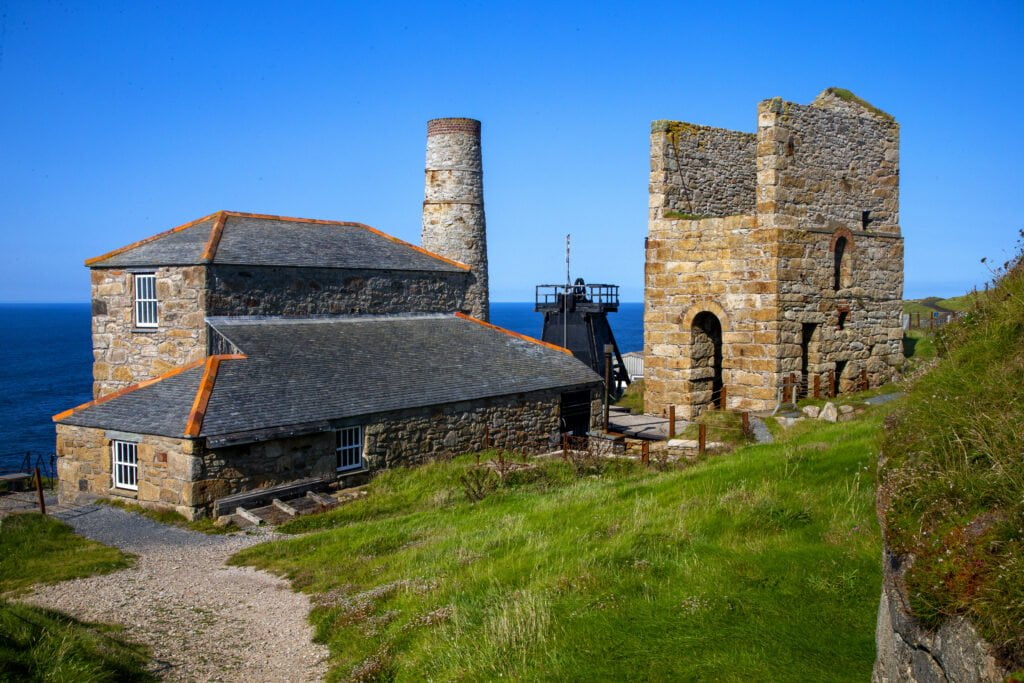From time immemorial Cornish tinners have celebrated the important dates on their calendar in their own way. Not only have the occasions been important to them and connected to the various changes in their annual routine, but the customary means of celebrating have also been pecu-liar to the tinners and marked them out as different from the population at large. Tinners’ traditions date from a remote period before records began. Archaeology has pushed back the earliest period when tin streaming took place in Cornwall and Dartmoor to before the Middle Bronze Age – well over three-thousand years ago. From those distant times the men who sought tin in the alluvium of Dartmoor and the river valleys of Cornwall followed their own customary ways with scant interest and concern in the activities of their farming and fishing neighbours. They were a race apart; a different people and non-tinners were “foreigners”. When the charters of medieval kings began to regularise the laws, rights and privileges of the tinners, from 1201 onwards, the Cornish world was officially divided between tinners and foreigners. The tinners’ year was broken up by regular festivals. They celebrated the start of their year and the end; the time each year when they brought their “black tin” concentrate together for blowing into “white tin” metal, and they memorialised their dimly remembered forebears’ discovery of tin and smelting. These occasions were noisy, outrageous and singular celebrations. Some of these festivals were still carried on into the second half of the nineteenth century, and remain even now as a sort of “folk memory”. On December 21st, 1995, the National Trust attempted a sort of revival of one of the great tinners’ festivals, that of Yow Whidden or White Thursday. It was remembered on the Thursday before Christmas Day. It is possible that the same day was celebrated in East Cornwall as Picrous Day, although some authorities place that day on the sec-ond Thursday before Christmas Day. Peter Pool, the eminent Cornish scholar, has pointed out that “whid-den” (whydn, gwyn, widden, whidn, etc.) although literally meaning “white- can be used to mean “happy”, thus the day could be “Happy Thursday”. As Christmas followed quickly after it, this might be what is referred to. The festival is also sometimes called Chy Whidden, which signifies “White House” instead of White Thursday. The meaning intended might then be “Whitening House”, or blowing house, where the tin was whitened into metal. To support this view there is the traditional remembrance on this day of the discovery by St. Pirran of tin smelting (whitening). Associated with St. Perran in this enterprise are two legendary characters called St. Picrous and St. Chywidden. St. Picrous was credited with helping St. Perran, by the tinners of East Cornwall, and St. Chywhidden by the men of the west. It is probable that the two traditions grew separately, celebrating the same half-forgotten events and heroes at the same time of the year.

How was the event celebrated? As late as the 1820s tinners claimed a holiday from work to celebrate Yow Whidden. and this feast was accompanied by much merrymaking. drinking, feasting and singing. It is the traditional day when the tin industry began, and when tin smelting first became efficient and economic. Tinners’ festivals were celebrated throughout the year. There was Old Christmas Day (6th January-Epiphany); Paul’s Tide or Paul’s Pitcher Day (January 24th), the day before the Feast of St. Paul; St. Perran’s Day (5th March or nearest Friday) also celebrated as Friday in Lide (First Friday in March); Midsummer Day, and finally, Yow Whidden/Chy Whidden/Picrous Day. While all of these festivals were celebrated boisterously, some had their own unusual features. On Paul’s Pitcher Day the tinners stood an old pitcher on a bank and pelted it with stones till it was totally destroyed, and then they retired to the pub where they obtained a new pitcher to replace the old one. The new pitcher was filled with beer and emptied several times in the course of the celebration. It appears to have been connected with the abstinence required whilst at work in their tin bounds. The new pitcher replaced the old one for carrying fresh drinking water to the tinners. On the Friday in Lide (St Perran’s Day) the tinners sent a young lad to sleep on the burrow within the bounds. The length of time he slept determined the normal length of the tinners’ aftercroust snooze for the following working year. March weather would not have been conducive to a long nap by the boy. Many ancient customs were kept up by tinners and miners over the centuries. In Camborne parish it was usual when a new adit/level was started or a new shaft was sunk, to have it blessed by the parish priest. The words: “Meriasek, we pray thee…” began a prayer uttered at such times. Early in the present century old Camborne men still remembered these words used until a generation or so ago. This dates from pre-Reformation times, when many tin bounds willed to them, to pay for prayers and candles for the dead. Thomas Beare’s book The Bailiff of Blackmoor written in 1586, contains . 111 delightful descriptions of the hilarious practices and customs of the tinners of Blackmoor. It is pleasant to contemplate the unselfconscious celebrations of centuries past, when tin streamers and millers enjoyed themselves with innocent fun. Their celebrations reflected an understanding that they were different from other people. and they lived their lives physically separated from them in remote valleys and moors. How different from the awkward, embarrassingly sentimental attempts by the media to depict tin miners celebrating their difference on the small screen, such as we have seen of late. Our mill-ing predecessors celebrated without inhibition and embarrassment, not to entertain strangers, but to share a joyful experience with their mates and to remember the achieve-ments and heroes of the past.